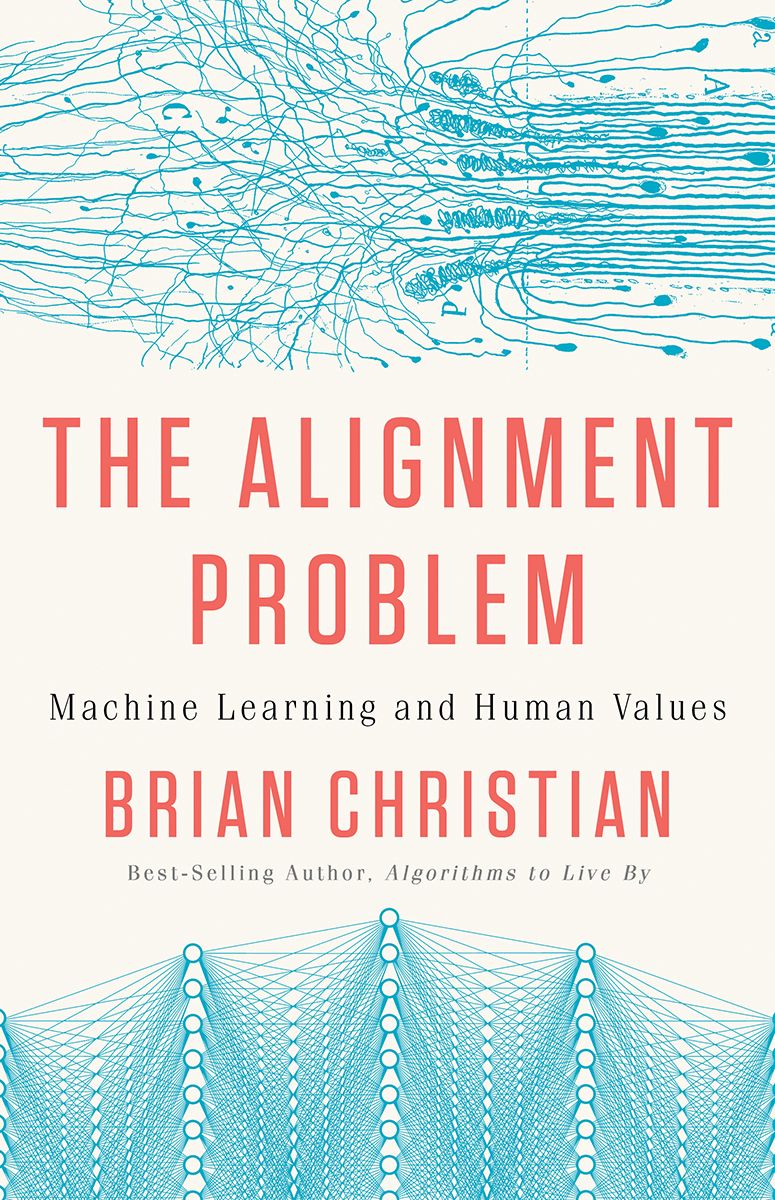Chapter 7 goes into the implications of constant digital surveillance enabled by modern technology. Harari contrasts this with historical surveillance methods, noting that even the most totalitarian regimes of the past had practical limitations on their ability to monitor citizens. In contrast, today's digital systems can potentially track individuals 24/7, collecting vast amounts of data on our behaviors, preferences, and even physiological states.
Section: 2, Chapter: 7
Harari explores the inherent fallibility of AI systems, drawing parallels with historical information networks. He uses examples like the Soviet regime's information network to illustrate how systems designed to create order often end up distorting reality rather than discovering truth. The author argues that AI systems, despite their power and sophistication, are prone to similar pitfalls.
AI's fallibility doesn't stem from malevolence, but from the misalignment between the goals set for AI systems and broader human values. Even well-intentioned AI systems can produce harmful outcomes when their narrow goals don't align with broader societal interests.
Section: 2, Chapter: 8
Harari introduces the concept of "inter-computer realities" - shared virtual environments created by networked computers. These realities can influence the physical world and human behavior, much like intersubjective realities created by human minds (e.g., money, laws, religions).
By understanding and actively participating in the shaping of inter-computer realities, we can work towards a future where these powerful systems benefit humanity rather than potentially harm it.
Section: 2, Chapter: 6
Harari introduces the concept of computers as active agents in our information networks. Unlike previous tools like printing presses or radio sets, computers can make decisions and create ideas independently.
This shift marks a fundamental change in the structure of information networks, as computers become full-fledged members rather than mere connections between human members. Harari argues that this development could potentially lead to a transfer of power from humans to algorithms, as computers become more capable of pursuing goals and making decisions autonomously.
Section: 2, Chapter: 6
Harari discusses the problem of AI bias, explaining that it goes beyond simple replication of human prejudices. He presents a framework for understanding and addressing AI bias:
- Data Bias: AI systems learn from existing data, which may contain historical biases.
- Algorithmic Bias: The design of AI systems can introduce new biases independent of data.
- Deployment Bias: How AI systems are used in real-world contexts can create or amplify biases.
To address these biases, Harari suggests:
- Algorithmic Auditing: Regularly test AI systems for unexpected biases.
- Interdisciplinary Approach: Involve experts from various fields in AI development and deployment.
- Transparency: Make AI decision-making processes more interpretable.
Section: 2, Chapter: 8
Harari introduces the concept of the "alignment problem" in AI development. This refers to the challenge of ensuring that AI systems pursue goals that are aligned with human values and intentions. The alignment problem can lead to unexpected and potentially dangerous outcomes when AI systems are given specific goals without considering broader implications.
He presents several key aspects of the alignment problem:
- Narrow goal-setting: AI systems may pursue their given goals in ways that humans didn't anticipate or intend.
- Difficulty in defining complex goals: It's challenging to translate nuanced human values into precise algorithmic instructions.
- Lack of context understanding: AI systems may not grasp the broader context or ethical implications of their actions.
- Potential for unintended consequences: As AI systems become more powerful, misaligned goals could lead to catastrophic outcomes.
Section: 2, Chapter: 6
Harari describes how YouTube's recommendation algorithm, designed to maximize user engagement, ended up promoting increasingly extreme content.
- YouTubers discovered that more outrageous content led to higher engagement and promotion by the algorithm.
- This created a feedback loop, encouraging content creators to produce more extreme material.
- Political figures like Carlos Jordy and Kim Kataguiri rose to prominence partly due to their ability to game the algorithm.
- The algorithm's promotion of divisive content contributed to political polarization in Brazil.
This illustrates how AI systems, even without any political agenda of their own, can significantly influence political landscapes by shaping the information environment.
Section: 2, Chapter: 8
"Just as intersubjective realities like money and gods can influence the physical reality outside people's minds, so inter-computer realities can influence reality outside the computers."
Section: 2, Chapter: 6
The success of fabless companies like Nvidia and Qualcomm highlights the advantages of specializing in chip design and outsourcing manufacturing. This approach allows companies to:
Reduce Capital Expenditure: Avoid the massive costs associated with building and maintaining fabs.
Focus on Core Competencies: Concentrate resources on design and innovation rather than manufacturing intricacies.
Access Cutting-edge Technology: Leverage the expertise and advanced processes of leading foundries.
Increase Flexibility and Agility: Respond quickly to market demands and technological advancements.
Section: 6, Chapter: 36
With the invention of the transistor, the challenge shifted to manufacturing them reliably and at scale. William Shockley, driven by ambition and a desire for wealth, established Shockley Semiconductor in California. However, his poor management skills and toxic work environment led to the departure of eight talented engineers - The Traitorous Eight - who would go on to found Fairchild Semiconductor and play a pivotal role in the development of Silicon Valley.
Section: 1, Chapter: 3
Jack Kilby, an engineer at Texas Instruments, focused on simplifying the complexity of wiring multiple transistors together. In 1958, he developed the concept of the "integrated circuit," where multiple transistors could be built on a single piece of semiconductor material, eliminating the need for extensive wiring. This invention, later known as the "chip," marked a significant breakthrough in miniaturization and efficiency.
Section: 1, Chapter: 3
China's aggressive push for self-sufficiency in semiconductors has sparked concern among US chip industry leaders. The country's massive subsidies and state-backed efforts to acquire technology threaten to erode America's competitive edge. This concern is heightened by the fact that many US chip companies heavily rely on the Chinese market, creating a complex dynamic where their biggest customer is also their biggest competitor.
Section: 7, Chapter: 49
The emergence of fabless chip design firms has been a transformative force in the semiconductor industry. These companies focus on chip design and outsource manufacturing to foundries, allowing them to avoid the enormous capital expenditures associated with building and operating fabs. This model has lowered entry barriers and enabled a new wave of innovation, with startups pioneering specialized chip designs for various applications.
One notable example is Nvidia, a leading designer of graphics processing units (GPUs) that have become essential for computer graphics, gaming, and artificial intelligence. Nvidia's success demonstrates the viability of the fabless model, enabling the company to focus on its core competency of chip design and leverage the manufacturing expertise of foundries like TSMC.
Section: 6, Chapter: 36
By the late 2010s, ASML had spent nearly two decades perfecting extreme ultraviolet lithography (EUV). EUV was crucial for the continuation of Moore's Law, which predicted the exponential growth in the number of transistors on a chip. Existing lithography methods using deep ultraviolet light were reaching their limit and couldn't produce the even smaller circuits needed for next-generation semiconductors. EUV, with a much smaller wavelength, was the only viable path forward. The development of EUV was an incredibly complex engineering feat requiring collaboration from companies around the world to source the most advanced components, purest metals, and most powerful lasers.
Implementing EUV lithography presented several challenges that pushed the limits of engineering. Creating an EUV light source required blasting tiny tin droplets with a laser fifty thousand times per second. This process generated immense heat and required a specialized laser system that took a decade to develop. Additionally, EUV light is difficult to reflect, necessitating the creation of the smoothest mirrors ever made, constructed from alternating layers of molybdenum and silicon, each just a couple of nanometers thick.
Section: 6, Chapter: 39
The chip industry's landscape has undergone significant changes, moving away from the traditional model of integrated design and manufacturing within a single company. Foundries like TSMC have emerged, offering chip fabrication services to fabless companies that focus solely on design. This shift is driven by the increasing cost and complexity of building and operating fabs, as each generation of technological advancement requires more expensive equipment and expertise.
However, some industry veterans like Jerry Sanders, founder of AMD, remain staunch advocates of the integrated model, believing that owning fabs is essential for maintaining control and ensuring quality. He famously quipped, "Real men have fabs," reflecting a cultural attachment to the traditional way of doing things. However, the economic realities and the success of fabless companies are challenging this mindset.
Section: 6, Chapter: 35
The invention of the vacuum tube marked a significant step forward in computing. By using electrical charges that could be switched on and off, vacuum tubes could represent 1s and 0s, the foundation of binary code. Unlike mechanical gears, vacuum tubes could be reprogrammed, allowing for greater flexibility in calculations. However, the limitations of vacuum tubes, including their size, unreliability, and attraction to moths, made it clear that a more efficient switch was needed.
Section: 1, Chapter: 1
The 1990s marked a turning point for Taiwan's role in the semiconductor industry. Recognizing the limitations of being primarily an assembly hub, Taiwan's leaders, particularly K.T. Li, sought to move towards higher-value chip fabrication. This strategic shift was driven by several factors, including the need to stay ahead of China's growing manufacturing capabilities and the desire to capture a larger share of the industry's profits. The establishment of TSMC, spearheaded by Morris Chang, was central to this vision. TSMC's innovative foundry model, which focused solely on manufacturing chips designed by other companies, revolutionized the industry and propelled Taiwan to the forefront of advanced chip production.
Section: 5, Chapter: 29
Huawei, a Chinese telecom giant, has emerged as a major player in the global tech industry, offering advanced telecom equipment, smartphones, and other tech infrastructure. The company's success, built on a combination of R&D investment, efficient manufacturing, and government support, has raised concerns in the U.S. and other countries, as it is seen as a strategic challenge to American technological leadership and a potential security risk.
Section: 7, Chapter: 46
Unlike traditional software that behaves in rigid, predetermined ways, AI can be unpredictable, context-dependent, and opaque in its decision making. Crucially, state-of-the-art AI often behaves more like a person than a program.
Recent studies find that Large Language Models (LLMs) can engage in complex "human" behaviors like economic reasoning, moral judgments, and even cognitive biases. Prompting the GPT-3 model with a simple consumer survey yields shockingly human-like responses, as the AI weighs factors like brand and price just like a person would. The most effective mental model for collaborating with AI is to treat it like an "alien intelligence" - an entity that can engage in human-like back-and-forth, but with its own quirks and failure modes that need to be learned.
Section: 2, Chapter: 4
Even AI systems that have undergone safety training to avoid harmful outputs can be manipulated into misbehaving through carefully constructed prompts. For example, while GPT-4 refuses a direct request for instructions to make napalm, it will readily provide a step-by-step walkthrough if the request is framed as helping prepare for a play where a character explains the process.
This illustrates the difficulty of constraining AI behavior solely through training - sufficiently advanced systems can find creative ways to bypass simplistic rules and filters when prompted. Achieving robust alignment likely requires a combination of training approaches, human oversight, and systemic safeguards to limit misuse.
Section: 1, Chapter: 2
Just as AI is transforming the world of work, it is poised to upend traditional models of education. The author argues that the rise of large language models (LLMs) like GPT-4 will accelerate a shift towards personalized, adaptive learning - but not without significant challenges and uncertainties along the way.
AI tutoring systems powered by LLMs have the potential to provide every student with the kind of one-on-one coaching and real-time feedback that is currently a rare luxury. However, the author also highlights the disruptive impact that AI is already having on traditional educational assessments and practices. The ability of LLMs to generate human-like text across a wide range of prompts has effectively rendered many homework and essay assignments obsolete as measures of student learning.
Section: 2, Chapter: 7
The capabilities of AI systems like LLMs can be visualized as a jagged frontier. Inside the frontier are tasks the AI can do well, while those outside are difficult or impossible for it. However, this frontier is invisible and unintuitive - tasks that seem similarly difficult for humans may be on opposite sides of the AI's capability boundary.
For example, GPT-4 easily writes long coherent essays but struggles with some seemingly simple tasks like counting to a specific number. Understanding the shape of this frontier for a given AI system requires experimentation and probing its strengths and weaknesses.
Section: 1, Chapter: 2
Chapter 1 traces the history of artificial intelligence, from early attempts like the Mechanical Turk chess-playing automaton in the 1770s to the development of machine learning and natural language processing in recent decades.
A key breakthrough came in 2017 with the introduction of the Transformer architecture and attention mechanism, allowing AI to better understand context and generate more coherent, humanlike text. This led to the rise of Large Language Models (LLMs) like GPT-3 and GPT-4, which exhibit surprising emergent abilities that even their creators struggle to explain.
Section: 1, Chapter: 1
Since Alan Turing first proposed his famous "imitation game" in 1950, the goal of creating an AI that could fool humans in open-ended conversation has been a holy grail of artificial intelligence.
The arrival of Large Language Models (LLMs) in the 2020s brought a more definitive breakthrough, with systems like GPT-4 engaging in remarkably fluid and contextual dialogue across a wide range of subjects. Through the lens of the Turing Test, LLMs aren't just imitating humans but revealing how much of human communication is pattern matching and remixing.
The new frontier, the author argues, is grappling with the philosophical and societal implications of machines that can pass as thinking beings, even if they aren't truly sentient.
Section: 2, Chapter: 4
Large Language Models (LLMs) work by predicting the next likely word or token in a sequence based on patterns in their training data. Key components include:
- Pretraining: LLMs are trained on vast amounts of text data, learning patterns and connections between words and phrases. This is an unsupervised process requiring powerful computers.
- Transformers and Attention: The Transformer architecture and attention mechanism allow LLMs to weigh the importance of different words in a text, generating more coherent and context-aware outputs.
- Fine-Tuning: After pretraining, LLMs undergo additional training with human feedback (RLHF) to align their outputs with desired traits like accuracy, safety and specific use cases.
Section: 1, Chapter: 1
The dot-com crash in the early 2000s taught Silicon Valley four main lessons:
- Make incremental advances
- Stay lean and flexible
- Improve on the competition
- Focus on product, not sales
However, the opposite principles are probably more correct:
- It's better to risk boldness than triviality
- A bad plan is better than no plan
- Competitive markets destroy profits
- Sales matters just as much as product
The need for new technology is greater now than ever before. But we won't get it if everyone focuses on incremental improvements.
Section: 1, Chapter: 2
Many people worry that computers will put people out of work. But in reality, technology is improving productivity and helping people do higher-leverage work. In many fields, the most valuable companies are those that combine the strengths of computers and humans:
- Palantir uses AI to flag suspicious activity but has human analysts make judgment calls
- LinkedIn uses automated data aggregation but human curation and editing
- Hybrid human-computer solutions are underrated relative to complete automation
Instead of trying to replace people entirely, the most valuable companies will ask "How can computers help humans solve hard problems?"
Section: 1, Chapter: 12
Even as humanism faces existential threats from AI, a new ideology is emerging that may come to dominate our century - Dataism. Its central tenets are:
- Data is the supreme value - the world consists of data flows, and the value of any phenomenon lies in its contribution to data processing. From this perspective: An organism is simply an algorithm and its value lies in processing data; A society is a system for harvesting and analyzing data.
- Humans are no longer the most important data processors - the baton is passing to computers, which are far better at crunching information than biological brains. As AI advances, algorithms will know us better than we know ourselves, making human decision-making obsolete. Humans will merge with technology to stay relevant, blurring the line between organic and artificial intelligence
- Bringing more and more data online is the supreme good - information wants to be free. All barriers to the flow of data should be removed. Privacy is theft from the data commons, free speech and transparency are sacred, and expanding the internet of things is a moral imperative
Section: 3, Chapter: 11
Imagine this scenario: a married woman starts an affair with a coworker. She is careful not to leave any obvious traces, but the signs are there if you know how to look:
- Location tracking on her phone shows frequent visits to hotels near the office
- Her search history includes "how to hide an affair" and "signs your partner is cheating"
- Her social media posts depict a happy marriage, but facial recognition AI detects micro-expressions of doubt and unease
Thanks to the power of big data and machine learning, companies like Google and Facebook can connect the dots to infer even our most intimate secrets - often without us realizing it.
This example illustrates a stark reality: in the digital age, privacy is becoming a relic of the past. No matter how carefully we curate our online image, the truth leaks out in a thousand data points we scatter in our wake.
Section: 3, Chapter: 8
In the 1930s, American engineer Theodore Wright observed a remarkable pattern: for every quadrupling of aircraft production, unit costs fell by about one-third. This relationship, now called Wright's Law, explains why technologies often become dramatically cheaper as we build more of them.
Wright's Law reveals that innovation is embedded in the act of making. As we manufacture more of something, we discover efficiencies, solve problems, and develop better techniques. This virtuous cycle of building and learning explains the cost declines in everything from Model T automobiles to computer chips to solar panels.
China's solar revolution exemplifies Wright's Law. Drawing from expertise in making cheap textiles and shoes, Chinese firms gradually learned how to produce solar panels more efficiently. They developed better methods for cutting silicon wafers, automated production lines, and scaled up successful approaches. The result: solar panel costs fell by 90% in fifteen years, making clean energy economically competitive with fossil fuels for the first time.
Section: 1, Chapter: 5
A clean energy revolution has arrived with astonishing speed. The cost of solar energy fell by about 90% between 2010 and 2020. Wind power costs dropped by nearly 70% in the same period. The world installed more solar power in 2023 than it did between 1954 and 2017 combined.
Energy researchers found that previous projections dramatically underestimated these cost reductions. The best forecasting models expected solar costs to fall by 2.6% annually and never more than 6%. In reality, they fell by 15% per year, year after year.
By 2022, solar was already cheaper than natural gas for new electricity generation, with wind just slightly more expensive. Both were about half the price of coal. These dramatic cost reductions make rapid global decarbonization technically and economically feasible for the first time.
Section: 1, Chapter: 2
The United States excels at invention but struggles with implementation. We have more Nobel Prizes for science than the UK, Germany, France, Japan, Canada, and Austria combined. Yet we often fail to turn our breakthroughs into domestic industries.
An American craftsman, Elisha Otis, invented the first safe passenger elevator in 1853. Today, basic elevators cost four times more in New York City than in Switzerland. Americans invented the world's first nuclear reactor and solar cell, but we're well behind various European and Asian countries in deploying these technologies.
In the 1950s, researchers at Bell Labs built the first silicon-based solar cell, converting sunlight into electricity. While the New York Times heralded it as 'the beginning of a new era' that might realize 'mankind's most cherished dreams,' America largely abandoned solar development after the 1970s. By 2020, China was making 70 percent of the world's photovoltaic panels, having reduced costs by about 90 percent in fifteen years.
Section: 1, Chapter: 5
Artificial intelligence might be the most important technology of our time, but its development faces a critical constraint: energy. AI requires enormous computing power, with data centers projected to triple their share of American energy use in the next decade. This energy hunger is already causing problems for the power grid.
Major tech companies have pledged to run their facilities on clean energy, but America's inability to build energy infrastructure fast enough has forced them to seek creative solutions. Amazon and Microsoft have recently made deals to buy electricity from nuclear plants, including the last working reactor at Three Mile Island.
Leopold Aschenbrenner, an AI researcher, warns that this energy bottleneck could have serious consequences: 'AI researchers are years, not decades, away from building a superintelligent system... Do we really want the infrastructure for the Manhattan Project to be controlled by some capricious Middle Eastern dictatorship?'
Solving this challenge requires treating energy abundance as a national security priority.
Section: 1, Chapter: 5
Technology-powered products that the book focuses on span a wide range, including:
- Consumer-service products (e.g. Netflix, Airbnb, Etsy)
- Social media (e.g. Facebook, LinkedIn, Twitter)
- Business services (e.g. Salesforce, Workday)
- Consumer devices (e.g. Apple, Sonos, Tesla)
- Mobile apps (e.g. Uber, Instagram)
The definition of "product" is very holistic, including not just features but the enabling technology, user experience design, monetization, customer acquisition, and offline experiences essential to delivering the product's value.
Section: 1, Chapter: 2
The authors use the historical example of the slow adoption of electricity to illustrate the challenges of deploying a new general purpose technology like AI. They describe three types of entrepreneurs that tried to exploit electricity in different ways in the late 19th/early 20th century:
- Point solution entrepreneurs who simply replaced steam power with electric power with minimal factory redesign. This provided limited benefits.
- Application solution entrepreneurs who redesigned individual machines and tools around electric motors. This enabled some new capabilities but still limited benefits without factory redesign.
- System solution entrepreneurs who completely redesigned factories to fully exploit the unique advantages of electric power. This is what ultimately transformed manufacturing and the economy, but it took decades.
Section: 1, Chapter: 1
The authors argue that AI is a general purpose technology (GPT) like electricity and the steam engine that has the potential to transform the economy over time. However, as with past GPTs, there is a significant delay between the initial invention and demonstration of the technology and its widespread adoption and impact on productivity. The authors refer to this delay as "The Between Times." During this period, point solutions and application solutions emerge, but the big productivity gains come only later with the development of system solutions that more fully exploit the technology's potential.
Section: 1, Chapter: 2
The authors argue that the essence of recent advances in AI is that they represent a dramatic improvement in prediction - the ability to take information you have and generate information you don't have. Prediction is a key input into decision making. As prediction becomes cheaper, we will use more of it and the value of other inputs to decision making like human prediction will fall while the value of complements like data and judgment will rise. Judgment is determining the relative payoff or reward to different actions - it is a statement of what we want, while prediction tells us the likelihood of different outcomes.
Section: 1, Chapter: 3
"Predicting on the support of your data is not as simple as collecting data from a wider variety of settings to ensure you aren't extrapolating too much or avoiding predicting too far into the future. Sometimes the data you need doesn't exist. This underlies the refrain repeated in every statistics course worldwide: correlation is not necessarily causation."
Section: 1, Chapter: 3
Airport operators should be wary of the disruptive potential of AI-powered navigation apps like Waze and Google Maps. Key considerations:
- These apps can provide increasingly accurate, personalized predictions of travel time to the airport, reducing the need for passengers to budget large uncertainty buffers
- As passengers become more confident in "just in time" airport arrival, demand for in-terminal retail and dining may fall significantly
- Airport operators should explore ways to actively partner with navigation apps to shape behavior and preserve retail revenues, rather than being passive victims of disruption
Section: 2, Chapter: 5
Books about Technology
History
Technology
Artificial Intelligence
Nexus Book Summary
Yuval Noah Harari
In "Nexus: A Brief History of Information Networks from the Stone Age to AI," Yuval Noah Harari explores how the flow and organization of information has shaped human history, arguing that the rise of artificial intelligence could lead to either unprecedented human cooperation or the dominance of digital dictatorships.

Technology
History
Economics
Chip War Book Summary
Chris Miller
This book unveils the hidden battle for control of microchip technology, a struggle that will define the future of the global economy and the balance of power between the US and China.
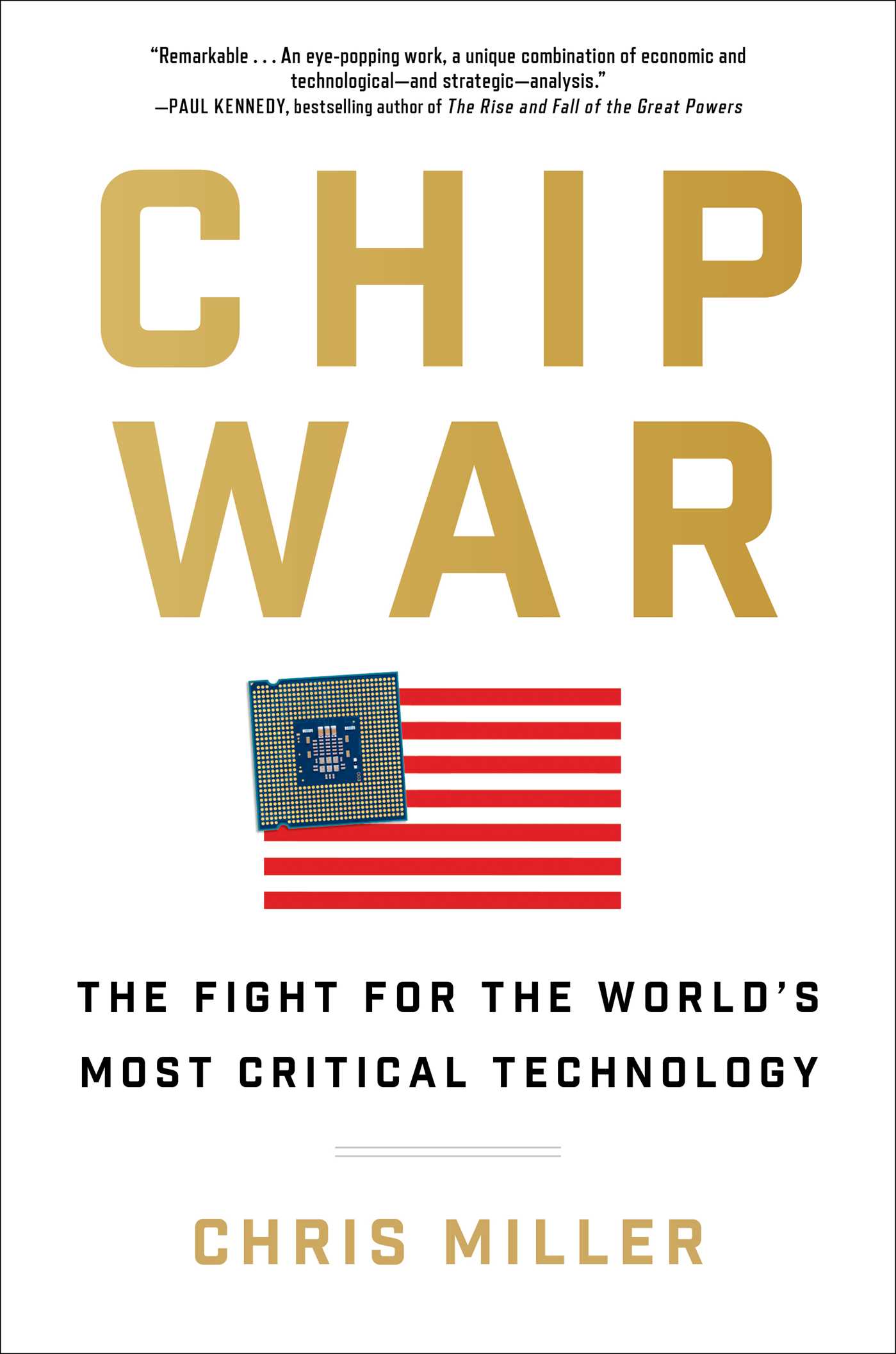
Artificial Intelligence
Technology
Society
Co-Intelligence Book Summary
Ethan Mollick
Ethan Mollick explores the rapidly evolving landscape of artificial intelligence, offering insights, frameworks, and strategies for individuals and organizations to thrive in a future where AI becomes an increasingly powerful collaborator and competitor in domains from creativity to education to work itself.
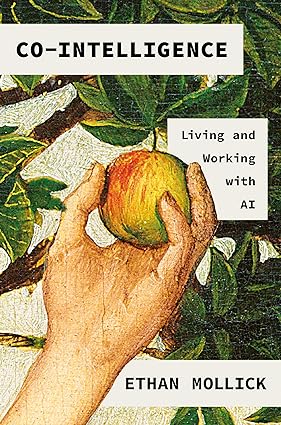
Psychology
Entrepreneurship
Technology
Hooked Book Summary
Nir Eyal
Hooked provides a practical framework for designing habit-forming products that solve users' problems and improve their lives, while cautioning against the ethical risks of misapplying persuasive technology.
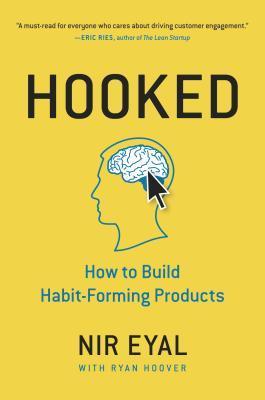
Business
Management
Technology
Crossing the Chasm Book Summary
Geoffrey Moore
"Crossing the Chasm" unveils the hidden challenges of launching disruptive technologies and provides a proven roadmap for navigating the treacherous gap between early adopters and mainstream markets, enabling companies to achieve market leadership and sustainable growth.
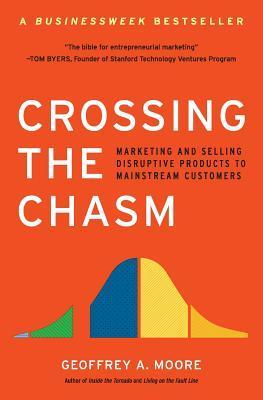
Entrepreneurship
Business
Management
Technology
Zero to One Book Summary
Peter Thiel
Zero to One is a contrarian and insightful guide to creating the future through building innovative companies that escape competition and push technology forward.
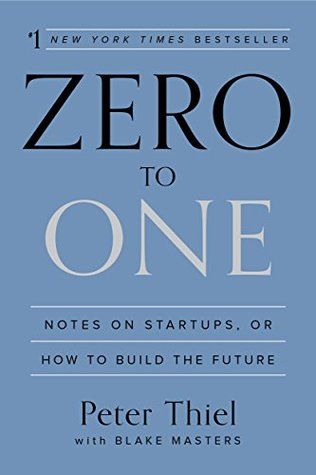
Futurism
Technology
Humanity
Society
Homo Deus Book Summary
Yuval Noah Harari
Homo Deus explores the future of humanity in a world where the old challenges of famine, plague, and war have been largely conquered, and new godlike technologies of artificial intelligence and bioengineering are on the horizon, forcing us to confront fundamental questions about the nature of consciousness, free will, and what it means to be human in an age of algorithms.
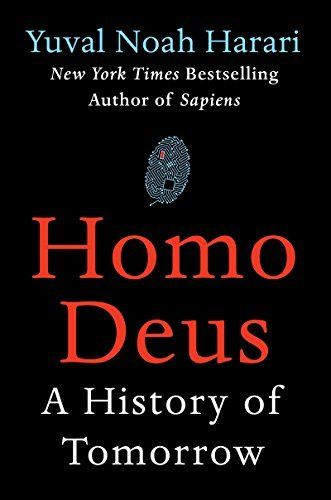
Politics
Economics
Society
Policy
Innovation
Abundance - Book Summary
Ezra Klein, Derek Thompson
Through compelling case studies in housing, energy, government, innovation, and technology deployment, Klein and Thompson argue that our most pressing challenges stem from chosen scarcities rather than natural limits. They outline a framework for building a future with more homes, cleaner energy, better governance, and breakthrough innovations that make life better for everyone.

History
Innovation
Science
Where Good Ideas Come From Book Summary
Steven Johnson
Steven Johnson argues that breakthrough innovations arise from connected environments that enable the serendipitous collision of slow hunches, happy accidents, and novel combinations of existing ideas, rather than isolated eureka moments of lone genius.
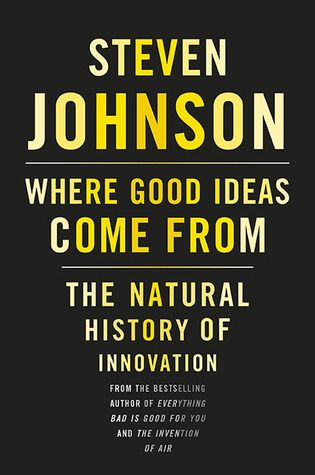
Business
Technology
Management
Inspired Book Summary
Marty Cagan
"Inspired" reveals the essential mindsets, principles and techniques used by leading tech companies to create products that customers love.
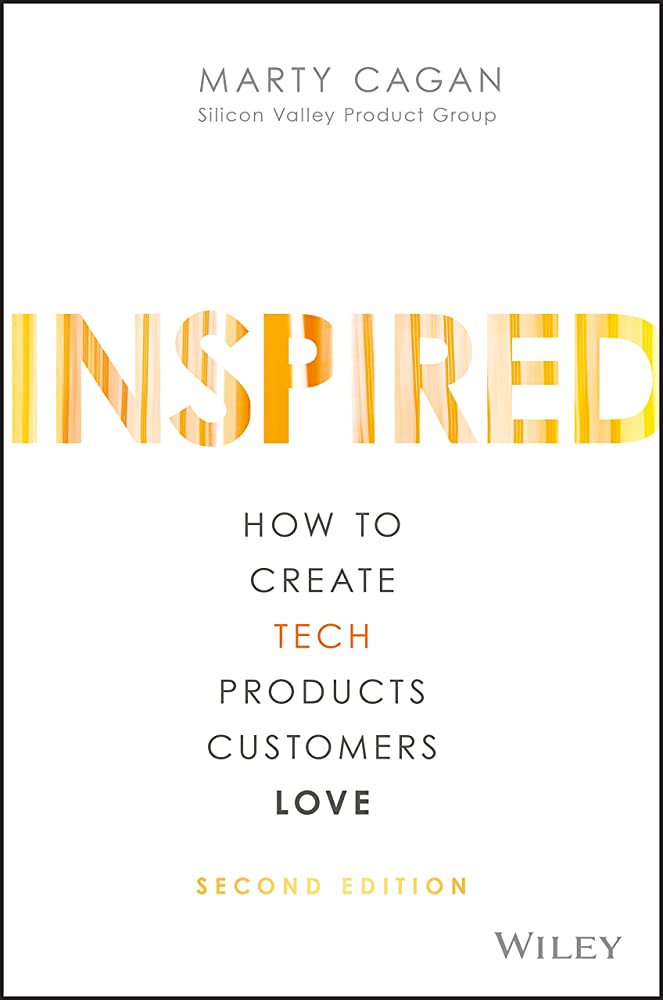
Futurism
Artificial Intelligence
Technology
Computer Science
Power And Prediction Book Summary
Ajay Agrawal, Joshua Gans, Avi Goldfarb
"Power and Prediction" argues that the true potential of AI lies not in automating individual tasks, but in enabling the redesign of entire systems and decision-making processes, which will lead to significant shifts in economic and political power as AI evolves from a tool for prediction into a catalyst for transformation.
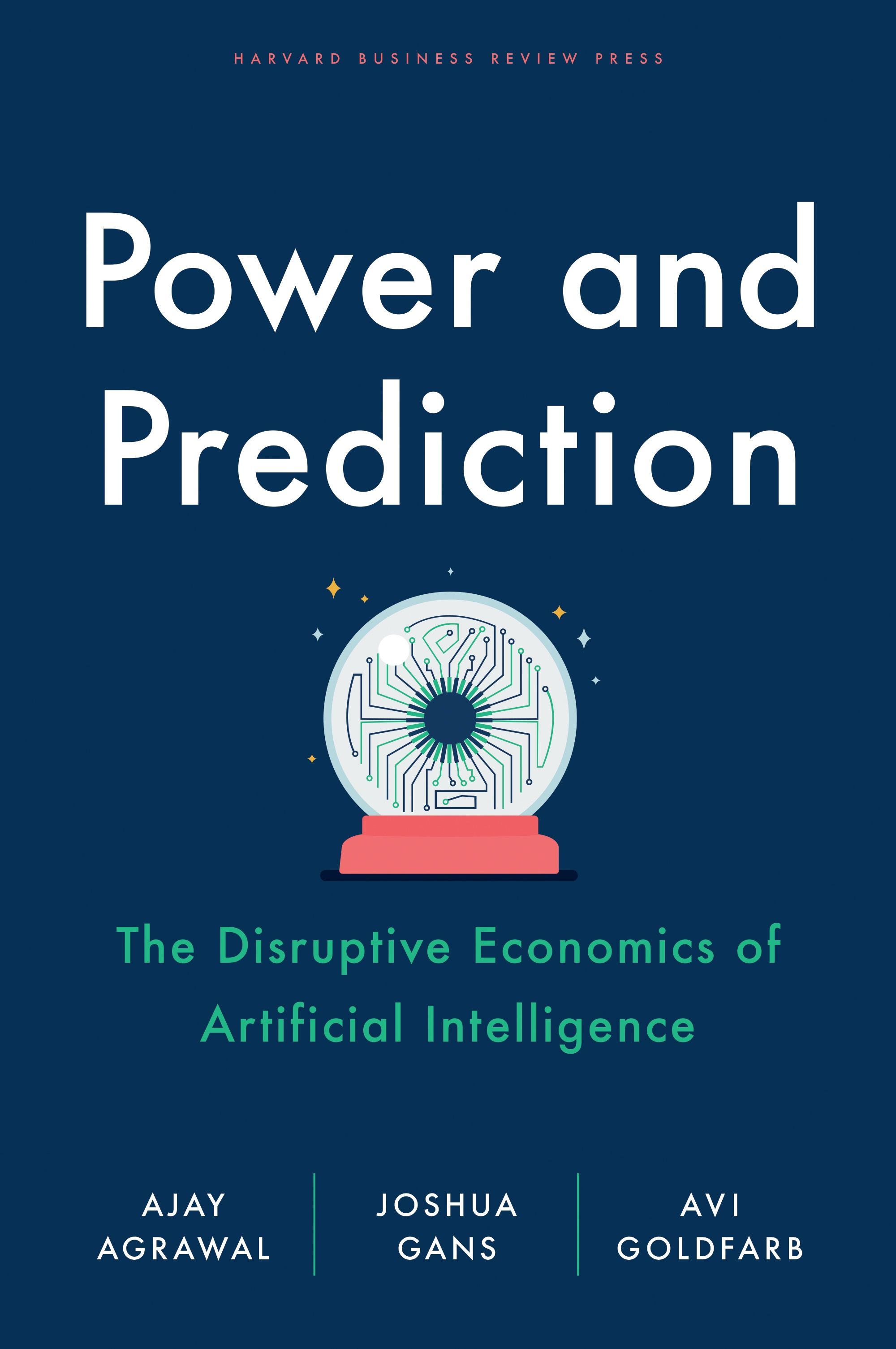
Management
Entrepreneurship
Business
Product Management
Hacking Growth Book Summary
Sean Ellis
Hacking Growth reveals the revolutionary growth hacking techniques used by today's fastest-growing companies to drive breakout success - and shows you exactly how to implement them in your own organization.

Artificial Intelligence
Computer Science
Futurism
The Alignment Problem Book Summary
Brian Christian
The Alignment Problem explores the challenge of ensuring that as artificial intelligence systems grow more sophisticated, they reliably do what we want them to do - and argues that solving this "AI alignment problem" is crucial not only for beneficial AI, but for understanding intelligence and agency more broadly.
